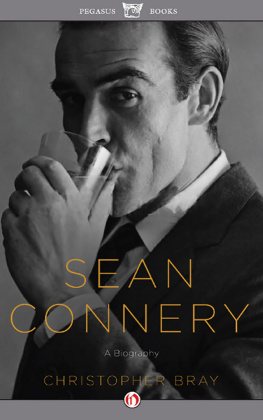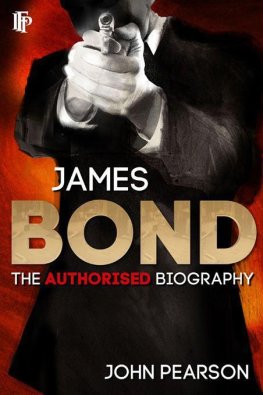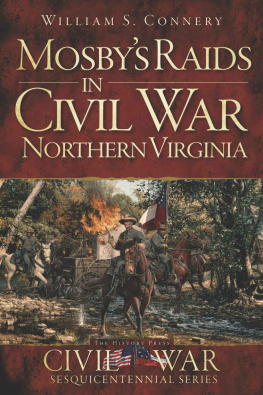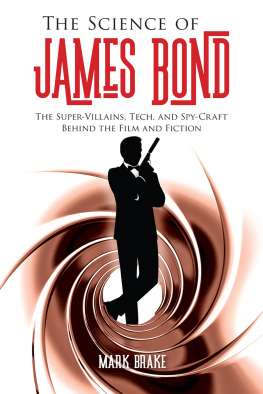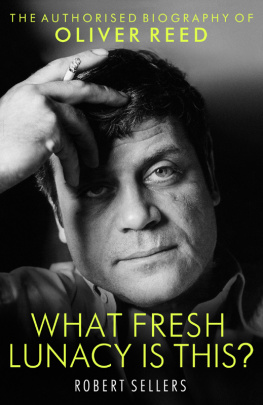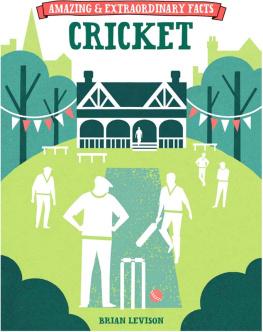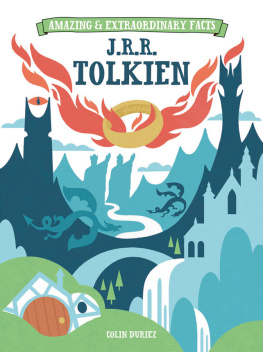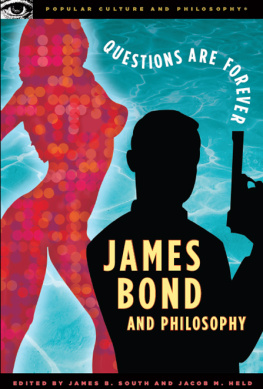
SEAN CONNERY
A Biography
Christopher Bray

PEGASUS BOOKS
NEW YORK
To the memory of my father
Illustrations
A publicity still for Another Time, Another Place (1957). Courtesy BFI; Kaydor
Connery during a quiet moment on the set of Woman of Straw (1964).
Getty Images
Mr Sean Connery at Home (in Wavel Mews, NW6), a publicity shot typical of the late 1950s and early 1960s. Getty Images
Alfred Hitchcock with Connery during the Marnie (1964) shoot.
Courtesy BFI; Universal
Diane Cilento and Connery in 1970, not long before their final separation and divorce.
Getty Images
Connery in the performance of his career in The Offence (1973).
Courtesy BFI; Tantallon
Charlotte Rampling with Connery in John Boormans Zardoz (1974).
Courtesy BFI; 20th Century Fox
Connery with Audrey Hepburn in Richard Lesters Robin and Marian (1976).
Courtesy BFI; Columbia
Connery with Christopher Lambert in Highlander (1986). Courtesy BFI; Highlander
Connery and Harrison Ford as father and son in Indiana Jones and the Last Crusade (1989).
Courtesy BFI; Paramount/Lucasfilm
Connery with Michelle Pfeiffer in The Russia House (1990).
Courtesy BFI; Path
Introduction
Reviewing Indiana Jones and the Last Crusade (1989), the long-time New Yorker critic Pauline Kael mentioned a friend whos in his early fifties and is eminent in his field [who] says that when he grows up he wants to be Sean Connery.
I have, I should stress, no wish to know Sean Connery. I have no fantasies about our being best buddies. I find all varieties of nationalism offensive and stupid; golf and football Connerys favourite sports bore me; and beyond his own career he has never exhibited much interest in film history. Besides, all the reports suggest that he is a combative soul who grows prickly at the idea of being the object of even distanced veneration. He has never really understood the mania he is still, turning 80, capable of inducing. Partly, I suspect, this is because Connery himself didnt grow up venerating anyone. Though as a child he occasionally went to the cinema, he has never to my knowledge admitted to being fond of any particular star. Unlike, say, Michael Caine, who grew up wanting to imitate the derring-do of Errol Flynn and the insolent jabber of Humphrey Bogart, Connery nursed no fantasies of being Edinburghs Clark Gable (as he might so easily have done). Indeed, the movies, the theatre, narrative itself, didnt really impact on him until he was well into his twenties. So the realisation, in his thirties, that there were people out there whose lives were lived through vicarious reveries came as a huge shock to him. His own feet planted firmly on the ground, he couldnt begin to conceive why so many men had their heads in the clouds.
Theres no denying, of course, that part of the wish to be Connery is a wish to be what Kael called the smooth operator James Bond.
That clunking sound you hear is of a man hedging his bets. For Cameron, like Bonds first begetter Ian Fleming, is an Old Etonian. Unlike Fleming, though, Cameron is keen to play down his patrician roots. Whereas Fleming was an unreconstructed stuffed shirt appalled at the casting of what he called that fucking truck driver in Harry Saltzman and Albert Broccolis movie version of Dr No (1962), Cameron is a populist wise to the idea that most of us prefer the democratised snobbery of the Bond films to the elitist snobbery of the books. Which is a way of saying that while Fleming might have kick-started this fantasy, it was Sean Connery who actually got it on the road and motored it round the world. If part of wanting to be Connery is wanting to be Bond, that is, the whole of wanting to be Bond is wanting to be Connery. Nobody ever fancied themselves the next Roger Moore.
You can call these starry identification fantasies childish, and doubtless they are. But childishness exists, and it may be more childish to believe adults can divorce themselves entirely from it than to admit that they occasionally go with its flow. Which is a way of saying that this is a book about the movies and what they have done to us. Read it and you will, I believe, get a pretty accurate account of what we know of Sean Connerys eight decades on the planet. But Connery has not cooperated on the book just as he has not helped any previous biographer and for the purposes of research I have had recourse to the same few interviews he has granted a handful of journalists over the years. Nor were many people who know or have worked with Connery willing to talk to me about him. What we know of Connerys private life, then, amounts to very little little more, in fact, than that he does not suffer fools gladly and is quite handy with a golf club.
We know even less about the private life of Leonardo da Vinci, of course, and the sources on him are finite in a way they are not yet on Connery, though that doesnt stop critics and historians and biographers writing about him. The same goes for Michelangelo and Shakespeare. And no, I am not surreptitiously lining Connery up in exalted company merely making the point that biographies get written about people not because of who they are but because of what they have done. Without the Mona Lisa and those prototype helicopters and artillery, those pencil studies of horses and fluvia, what possible interest could Leonardo have for us? Who would Shakespeare be had he not written those plays and poems? The same goes for Sean Connery. Without his work in the movies, what hold could he have over anyone but his friends and family? It may be that when he is dead all number of people come crawling out of the woodwork to bitch and moan about the real-life Connery they knew. Some of what they want to tell us may even be verifiably true. But so what? We can all of us be bitched and moaned about. Not many of us have managed to sustain a career of international movie stardom for nigh on half a century.
Which means that what holds our attention about Connery is something more and something less than a man. The character you and I refer to when we talk about Sean Connery is just that: a character, a construct, a fiction and a fiction composed of sundry other fictions at that. Back in the sixties, as his movies broke box-office record after box-office record, it was commonplace to refer to Connery as a phenomenon. But in the Kantian scheme of things the term is more generally applicable. All we know about Connery is what Kant would have called the phenomenon his weight, his height, his colouring, his sensorily apprehensible presence in the world. As to the Connery noumenon what he is really like beneath that crust of apprehensions well, that is another matter. All we can meaningfully talk about is his work in the movies.
Is it, though, sensible or fair to talk about Sean Connerys work in the movies? Isnt he just an actor at the service of directors and producers and screenwriters? The answer is both a qualified yes and a qualified no. Certainly in his early days, Connery like all struggling actors was absolutely at the behest of those above him in the cinematic pecking order. But since the Bond series sent him soaring into fames empyrean he has pretty much run things the way he wants. If he wants to change a character here, a line of dialogue there, a plot twist at the end of the second act, he can and does. True, he has never written a script (though he has helped out on the rewrites of many of the movies he has appeared in). True, he has never directed a film (though he has directed a few stage productions, and in later years has been executive producer of several pictures). On the other hand, movies have been made simply because of his existence. Connery doesnt just appear in movies. Movies appear around him, around the idea of his very presence. Back in the early 1950s, Terence Young, who would go on to direct three of the first four Bond pictures, was feted by a number of French auteurist critics, yet which of us has ever said, Lets go see the new Terence Young movie? Countless, though, are they who have raced to see the new Sean Connery movie.
Next page
